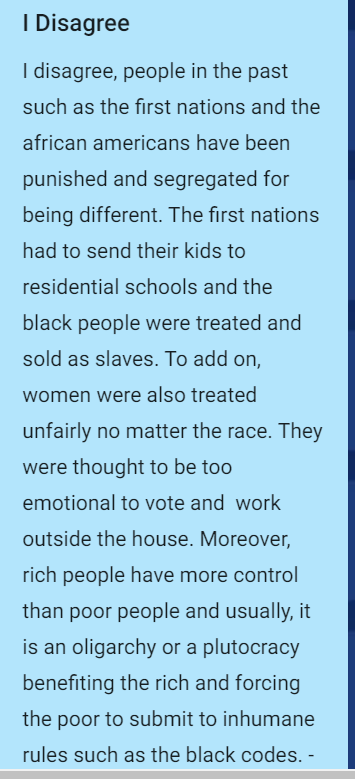The last time that we were in the school together was in March. Believe it or not, some classrooms still had the omnius date of when school changed – March 13, 2020 – up on the board. One thing that was still up and brought a sense of joy was the Black History Month display that was in the library. Last school year, I was blown away by the amazing display of books that our Teacher Librarian created so that students could freely explore Black history and story. I found myself drawn to it every time I walked into the space because there were a number of books that I hadn’t explored and it was refreshing to see.
To be honest, I struggle with Black History Month being the shortest month of the year. I’ve written before about my feelings around having months where we celebrate and move on past the everyday realities that are the lives of our students and dare I say, educators. I also always feel a certain level of pressure to do something and then feel frustrated that I, as a black person, has to be the “one” to do the “Black History Month thing”, rather than it being a collective decision. Last year I sat back and wondered what might be done. All too often this month allows schools and districts the opportunity to click the equity checkbox, yet students and educators like me recognize and understand this as performative work. When Black history and story are relegated to one month of the year, what message does this send? Does this in turn tell non-Black students as they grow up, that February is the only time to check that equity checkbox?
In this post, I want to highlight ETFO’s 365 Black Canadian Curriculum. I’ll be honest and say that it is a resource that I need to spend more time in myself. Much of the history taught widely has been American and yet there are so many remarkable Black Canadians, past and present.
By clicking the link above, you’ll find a compilation of resources – calendar, lesson plans, workshop, and poster – that support educators and students in learning about Black Canadian history. On each day of the calendar, a Black Canadian is highlighted with information on: what they are known for; notable facts; photos; and articles about the person. When first looking at the list, I was blown away by how many of the people I didn’t know. If you haven’t taken a look at the calendar or resource, spend some time doing your own learning. I know that we often get excited about using a resource with students and with this one, I think we need to get excited about doing some learning for ourselves. That being said, please don’t use not enough time for your own learning as an excuse to not teach about this in your classrooms. ETFO has removed this excuse by compiling the resources and having them in one place. Don’t discount it, you might be pleasantly surprised by how much you learn, how interested you become and how much you enjoy it.
The hands-on teacher resources are available in both French and English and include worksheets for primary, junior and intermediate students. This past week, I used the lesson on Molly Johnson. Students were engaged in the lesson and the great part was that students were blown away by the fact that she’s not only a Canadian jazz singer, songwriter and broadcaster on CBC. She also won a Juno Award and a National Jazz Award. She was named an Officer of the Order of Canada. She co-founded the Kumbaya Foundation AIDS charity and she has toured all over the world. The fact that she happens to look like some of us within the classroom space was a bonus. With handwashing, the lessons are short but for our next Music class, we will continue the lesson as students were so engaged and wanted to know more.
It’s time to reflect on the history and stories that are being taught in schools. How are we ensuring that Black Canadian history and story are also being taught within our classrooms? ETFO has a great curriculum that can be easily incorporated. Let’s ensure that Black history isn’t only being shared from an American lens of the past during the shortest month of the year but that it’s celebrated within classrooms on a daily basis. Let’s learn together and please share with me what you’ve tried in your classroom.




